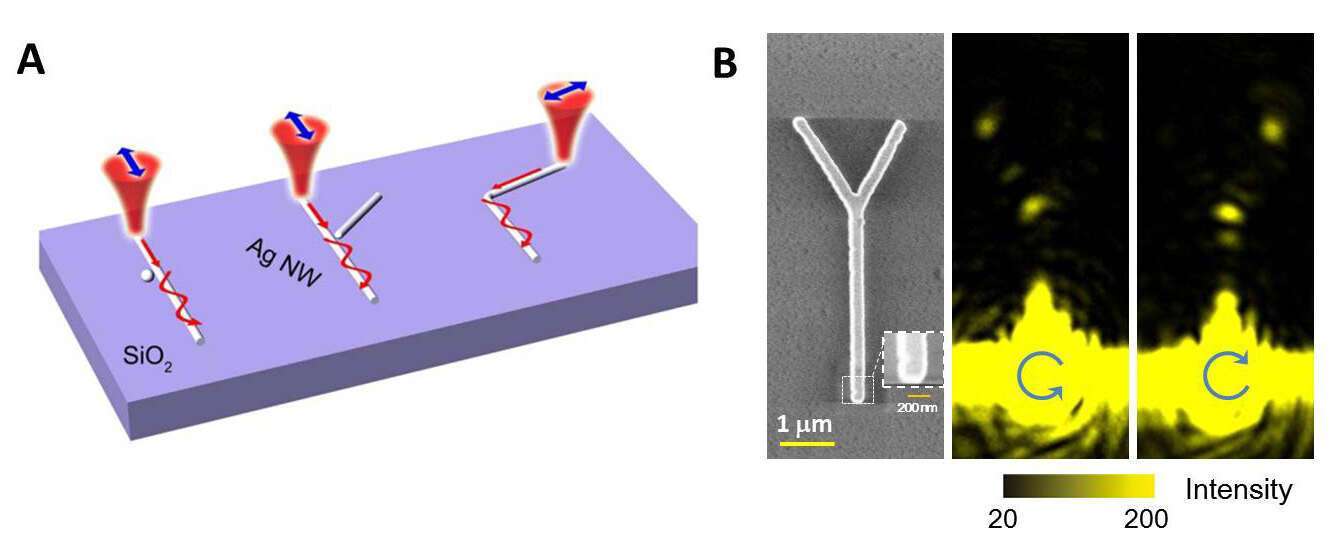
Mode-Conversion and Spin-Control of Surface Plasmons in Plasmonic Nanocircuits
Plasmonic circuitry is a good candidate as platform for next-generation information technology. Its realistic applications rely on the control of surface plasmon propagation. In the past, we realized the optical router [1, 2] and logic gates [3, 4] based on metal nanowire waveguide. We here propose new methods for controlling the propagation of surface plasmons. We first show that by meditating the conversion of plasmon modes a flexible control to the propagation can be achieved [2]. We experimentally prove the conversion of plasmon modes occurs widely in metallic nanowire waveguides, by introducing local structural symmetry breaking. In further simulations, it is shown that the mode conversions originate from the redistribution of electric field on the wave front. Utilizing this mode conversion effect, we propose an optical switch to control the signal routing in plasmonic nanowire networks. We then show that the plasmon propagation in plasmonic circuits can be controlled using the spin angular momentum of photons. We find strong spin-orbital interaction (SOI) occurs in the generation of plasmons using spin-polarized photons. This SOI will induce vortex near-field traverse power flow and make the propagation of surface plasmons spin-dependent. Utilizing this SOI process we further experimentally realize the photonic spin Hall effect in plasmonic nanocircuits.

Figure : (A) Illustration for mode conversion of propagating plasmons in nanowire . (B) The SEM image of fabricated branched nanowire network and optical scattering images for spin-control of plasmon propagation.
References:
[1] Fang, Y. R.et al. Nano Lett. 10, 1950 (2010).
[2] Wei, H., Zhang, S. P., Tian, X. R. & Xu, H. X. Proc. Natl. Acad. Sci. USA 110 4494 (2013).
[3] Wei, H. et al. Nano Lett. 11, 471 (2011).
[4] Wei, H., Wang, Z. X., Tian, X. R., Kall, M. & Xu, H. X. Nat. Commun. 2, 387 (2011).
[5] Pan, D., Wei, H., Jia Z. L. & Xu H. X. Sci. Rep. 10, 1038 (2014).
dengpan@iphy.ac.cn
Powered by Eventact EMS